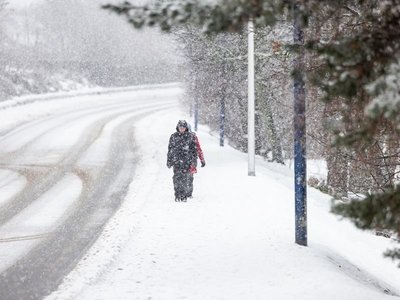Great Britain Faces Lowest Winter Blackout Risk in Four Years
Great Britain is experiencing the lowest risk of winter blackouts in four years due to investments in low-carbon electricity sources. The National Energy System Operator projects a surplus in winter power supply, with increased battery storage and electricity imports, notably from Denmark's Viking power link. Britain's reliance on these innovations is part of its plan to meet its 2050 climate targets while ensuring power stability during potential gas crises.
Great Britain is experiencing its lowest risk of winter blackouts in four years, due to significant investments in low-carbon electricity sources.
The National Energy System Operator (Neso) projects that this winter, power supplies in Britain will exceed demand by almost 9%, a record-high margin since the winter of 2019-2020.
The closure of the UK’s last coal-fired power plant has been offset by a combination of increased battery storage, small-scale renewable projects, and record levels of imported electricity, especially from the Viking power link with Denmark.
This link is part of the UK's strategy to move towards a more flexible, low-carbon grid as the country aims to meet its 2050 climate targets.
Amidst concerns over gas shortages spurred by the conflict in Ukraine, Britain is reassured by EU gas reserves being 95% full and anticipates additional imports from Norway, the US, and Qatar.
Neso is working proactively with government and regulatory bodies to manage potential risks.
Additionally, demand flexibility measures will continue to encourage consumers and businesses to reduce energy use during peak times.
Last winter, 2.6 million households and businesses received payments to alleviate pressure on the National Grid.
The National Energy System Operator (Neso) projects that this winter, power supplies in Britain will exceed demand by almost 9%, a record-high margin since the winter of 2019-2020.
The closure of the UK’s last coal-fired power plant has been offset by a combination of increased battery storage, small-scale renewable projects, and record levels of imported electricity, especially from the Viking power link with Denmark.
This link is part of the UK's strategy to move towards a more flexible, low-carbon grid as the country aims to meet its 2050 climate targets.
Amidst concerns over gas shortages spurred by the conflict in Ukraine, Britain is reassured by EU gas reserves being 95% full and anticipates additional imports from Norway, the US, and Qatar.
Neso is working proactively with government and regulatory bodies to manage potential risks.
Additionally, demand flexibility measures will continue to encourage consumers and businesses to reduce energy use during peak times.
Last winter, 2.6 million households and businesses received payments to alleviate pressure on the National Grid.










